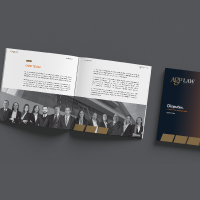
Recommended contact person
How AGP Law Can Assist with Oppositions, Objections, and Settlement Solutions
Trademark oppositions play a crucial role in protecting intellectual property rights and ensuring fair competition in the marketplace. This article provides a detailed overview of trademark opposition procedures at the European Union Intellectual Property Office (EUIPO) and the World Intellectual Property Organization (WIPO). Furthermore, it outlines the ways AGP Law can assist clients who wish to oppose a trademark application, object an opposition, or seek settlement solutions such as coexistence agreements.
EUIPO Trademark Oppositions
Overview of the European Union Intellectual Property Office (EUIPO):
- The EUIPO is responsible for registering European Union trademarks (EUTMs) within the European Union (EU).
- EUIPO oppositions provide a platform for third parties to challenge the registration of a trademark.
Grounds for Opposition:
- The Relative Grounds – Oppositions can be filed if the applied-for trademark is similar or identical to an earlier trademark and there is a likelihood of confusion.
- The Absolute Grounds – Oppositions can be based on absolute grounds for refusal, such as descriptive or generic marks, lack of distinctiveness, or signs contrary to public policy or accepted principles.
AGP Law’s Role in EUIPO Oppositions:
- Consultation: Our firm will review the opposition grounds, assess the likelihood of success, and advise clients on the best course of action.
- Preparation and Filing: We will prepare a comprehensive opposition notice and file it with the EUIPO within the prescribed timeframe.
- Evidence Collection: We will gather relevant evidence, such as prior trademark registrations, market surveys, and expert opinions (if needed), to strengthen the opposition case.
- Negotiation and Settlement: We can engage in negotiations with the opposing party to explore settlement options, including coexistence agreements or licensing arrangements.
- Representation: We can represent clients throughout the opposition proceedings, including written arguments, written submissions and hearings, and any necessary appeals.
WIPO Trademark Oppositions
Overview of the World Intellectual Property Organization (WIPO):
- The WIPO provides a platform for international trademark registration through the Madrid System.
- WIPO oppositions allow parties to challenge the registration of an international trademark.
Grounds for Opposition:
- Similar to the EUIPO, the WIPO oppositions can be based on relative grounds of refusal, involving likelihood of confusion with prior trademarks.
- Absolute grounds for refusal, such as generic or descriptive marks, lack of distinctiveness, or violation of public policy, may also be invoked.
AGP Law’s Role in WIPO Oppositions:
- Assessment and Strategy: We will review the opposition grounds, evaluate the strength of the case, and devise a comprehensive opposition strategy.
- Preparation and Filing: We will draft a well-structured opposition notice and file it with the WIPO within the prescribed time limits.
- Evidence Collection: We will gather relevant evidence, including international registrations and evidence of prior use, to support the opposition claim.
- Mediation and Settlement: We can explore mediation and settlement options through WIPO’s Alternative Dispute Resolution (ADR) services, promoting coexistence agreements or other mutually beneficial solutions.
- Advocacy and Representation: We represent clients during the opposition proceedings, presenting arguments, attending remote hearings, and managing any subsequent appeals.
Settlement Solutions: Coexistence Agreements and More:
Coexistence Agreements:
- Coexistence agreements allow parties with similar trademarks to peacefully coexist and operate in the same market without causing confusion or infringement.
- We can assist in negotiating and drafting coexistence agreements that outline the rights, limitations, and obligations of both parties, ensuring a mutually beneficial arrangement.
Other Settlement Solutions:
- Licensing Agreements: We can help clients explore licensing agreements where one party grants permission to another to use their trademark under specific conditions.
- Assignment of Rights: We can assist in the transfer of trademark rights between parties, ensuring a smooth transition and proper documentation.
- Domain Name Disputes: In cases involving conflicts between trademarks and domain names, we can provide guidance and representation in domain name dispute resolution procedures.
Advantages of AGP Law’s Services
Expertise and Experience:
- Our firm boasts a team of experienced trademark attorneys with in-depth knowledge of EUIPO and WIPO opposition procedures.
- We have a track record of successful outcomes in trademark opposition cases, leveraging our expertise to protect clients’ interests effectively.
Tailored Legal Strategies:
- We understand that every opposition case is unique, and we develop customized strategies based on the specific needs and goals of our clients.
- We conduct thorough research and analysis to build strong opposition arguments and maximize the chances of a favorable outcome.
Comprehensive Support:
- Our services encompass the entire opposition process, from initial consultation to final resolution, ensuring that clients receive comprehensive and consistent support throughout.
- We handle all legal documentation, evidence collection, negotiations, and representation, alleviating the burden on clients and allowing them to focus on their core business activities.
Trademark oppositions are critical for safeguarding intellectual property rights, while understanding and navigating through the procedures at EUIPO and WIPO requires expertise and strategic thinking. Our law firm specializes in assisting clients with trademark oppositions, objections, and settlement solutions, including all sort of settlement agreements.
What is a Coexistence Agreement?
Coexistence agreements are legally binding contracts that allow two parties with similar or potentially conflicting trademarks to coexist and operate in the same market without causing confusion or infringing on each other’s rights. These agreements establish clear boundaries and rights for each party, ensuring that they can peacefully coexist and maintain their respective brand identities.
Here are some additional details about coexistence agreements:
- Their Purpose: Coexistence agreements are primarily aimed at resolving conflicts between trademarks that are similar or identical. By defining the scope of each party’s rights and establishing guidelines for coexistence, these agreements help prevent confusion among consumers and minimize the risk of trademark infringement claims.
- Terms and Conditions: Coexistence agreements typically include several key provisions, such as:
- Territory: The agreement specifies the geographical territories where each party can use its trademark. This helps delineate the market boundaries and prevent direct competition in overlapping regions.
- Goods/Services: The agreement identifies the specific goods or services that each party may offer under its trademark. This ensures that the trademarks can coexist in distinct product or service categories, reducing the likelihood of confusion.
- Quality Control: Coexistence agreements may often require both parties to maintain certain quality standards associated with their goods or services. This ensures that consumers are not misled or deceived by subpar products bearing either trademark.
- Use Guidelines: The agreement may establish guidelines for how each party should use its trademark, including rules related to branding, packaging, advertising, and promotional materials. These guidelines help differentiate the trademarks and maintain their distinct identities.
- Duration: Coexistence agreements have a specific duration, typically several years. The parties may choose to renew the agreement upon expiration if both parties are satisfied with the coexistence arrangement.
- Termination: The agreement may outline conditions under which either party can terminate the agreement, such as a breach of contract or significant changes in the market circumstances. Termination provisions ensure that parties have an exit strategy if the coexistence becomes unviable.
Benefits and Considerations of a Coexistence Agreement:
Avoiding Litigation: Coexistence agreements provide an alternative to lengthy and costly legal disputes. By reaching a mutually beneficial arrangement, parties can save time, resources, and the uncertainties associated with litigation.
Market Presence: Coexistence agreements allow both parties to maintain their market presence and brand recognition, even in situations where their trademarks may be similar. This can be particularly beneficial if both parties have invested significant time and resources in building their respective brands.
Flexibility: Coexistence agreements are flexible and customizable, allowing parties to tailor the terms to their specific needs and circumstances. This flexibility enables parties to find creative solutions that balance their interests and minimize conflicts.
Compliance and Enforcement: Coexistence agreements provide a clear framework for compliance and enforcement. If either party breaches the agreement, the other party can seek legal remedies as outlined in the contract.
Legal Assistance: Developing a comprehensive coexistence agreement requires legal expertise to ensure that the terms are fair, enforceable, and protect the interests of both parties. Engaging the services of a knowledgeable trademark team of lawyers in AGP Law is crucial to drafting and negotiating a coexistence agreement that meets the unique needs of the parties involved.
It is important to note that coexistence agreements are highly specific to the parties involved and their particular circumstances. Each agreement should be carefully drafted to address the individual trademarks, market considerations, and goals of the parties seeking coexistence.
A well-known opposition involving international brands that was successfully settled through coexistence agreements is the dispute between Apple Inc. vs. The Beatles’ Apple Corps Ltd. This high-profile trademark dispute arose between Apple Inc., known for its technology products, and The Beatles’ Apple Corps Ltd., a music company. The conflict began in the late 1970s and revolved around the use of the “Apple” trademark in the music industry, which had previously been restricted to Apple Corps. The parties settled their differences through a series of agreements, with Apple Inc. acquiring certain rights to use the Apple logo and name in relation to computer-related products, while Apple Corps retained rights for its core music business.
For International Trademark Registrations you may also look at our World Intellectual Property Office (WIPO) Applications article and for EU Trademark Registrations you may look at our European Union Intellectual Property Office (EUIPO) Applications article.
If you are looking to register a trademark, we would be happy to assist you. You may either submit for Trademark Registration through the AGP Law online application form, otherwise you may contact us at agp@agplaw.com to learn more about our services and how we can help you register your trademark.
The information provided by A.G. Paphitis & Co. LLC is for general informational purposes only and should not be construed as professional or formal legal advice. You should not act or refrain from acting based on any information provided above without obtaining legal or other professional advice.
















